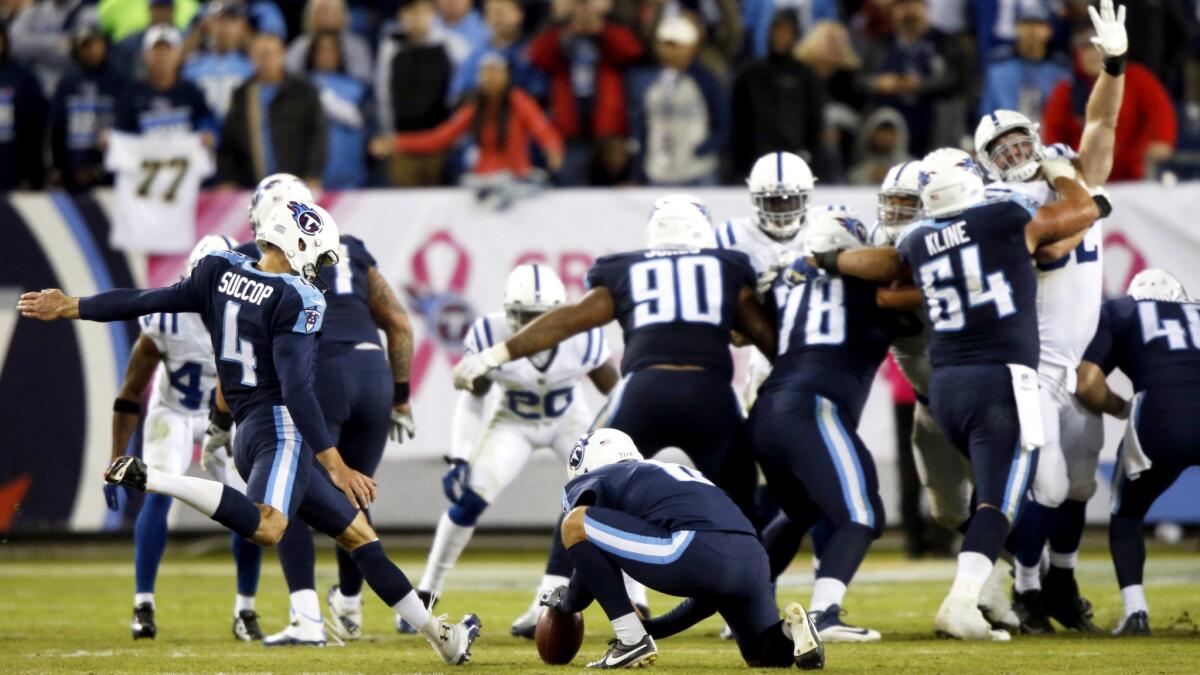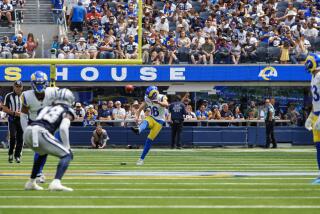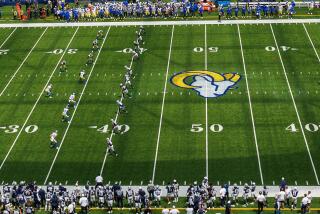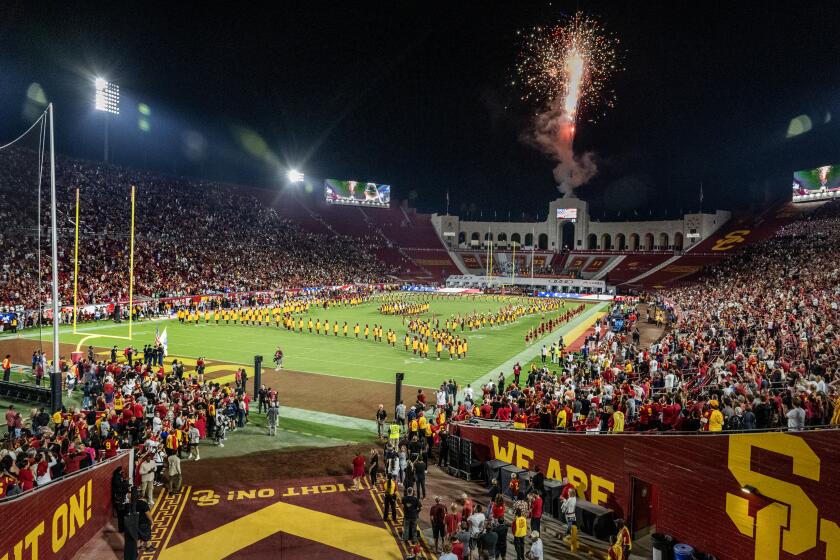Ask Farmer: Taking a look at setting up for field goals and stiff-arm rules

Have a question about the NFL? Ask Times NFL writer Sam Farmer, and he will answer as many as he can online and in the Sunday editions of the newspaper throughout the season. Email questions to: sam.farmer@latimes.com
::
In setting up for a field goal or extra point, must the offensive team have the kick attempted exactly seven yards behind the line of scrimmage? Or instead, could the kick be attempted from eight, nine, etc., yards back?
Phil Weiss
Studio City
Farmer: For this, I called former NFL kicker Michael Husted, who now coaches the discipline in San Diego. He points out that the ball is actually held eight yards back in the NFL, and typically between seven and 7 1/2 in college. The distance is a rule of thumb, and not mandated. There are a few factors in play, and even the slightest of adjustments can mean the difference between a made kick and one that’s deflected or blocked.
First, there’s the timing of the snap-to-kick operation. If executed correctly, that should take between 1.25 and 1.28 seconds. Moving the ball back a yard would compromise that because it would have to fly through the air fractionally longer.
Then, you have to worry about the defenders crashing in from the ends and getting inside the the blocker on the end. That’s how Kansas City got a hand on Oakland’s long field goal try Thursday night. Eight yards back creates a somewhat acute angle for those rushers, making it slightly more laborious to start upfield then beat a blocker on the edge. Were the kick back another yard, that would be a fractionally more gradual angle and therefore easier to block the kick.
Finally, the kicker has to get the ball up quickly to clear those towering linemen — both his own, and defensive ones with arms raised. Move the hold in closer, and that angle becomes much more extreme.
“What a team will do if they bring you in for a workout in the NFL is they’ll put you through a crossbar drill,” Husted said. “They’ll put you five yards away from the goal post and see if you have the trajectory to clear that. You’ll be kicking from the middle of the end zone. If you can do that, they’re not too worried about you getting the ball up and over the line.”
::
A defensive player will be penalized for any action that results in hitting an opponent’s helmet or facemask. So why can a running back can viciously stiff arm a defender in the same area legally?
Marc Schwartz
Indio
Farmer: The stiff-arm rules are the same for a runner and a tackler, and for linemen on offense and defense. They all can use their open hands on an opponent’s facemask, as long as that facemask isn’t grasped, twisted or pulled. But straight stiff-arms are legal, and the rules should be equally applied. Officials clamp down on defenders going to the facemask of receivers coming off the line, so sometimes there is disparity there, but theoretically, all must adhere to the same standards.
More to Read
Go beyond the scoreboard
Get the latest on L.A.'s teams in the daily Sports Report newsletter.
You may occasionally receive promotional content from the Los Angeles Times.











